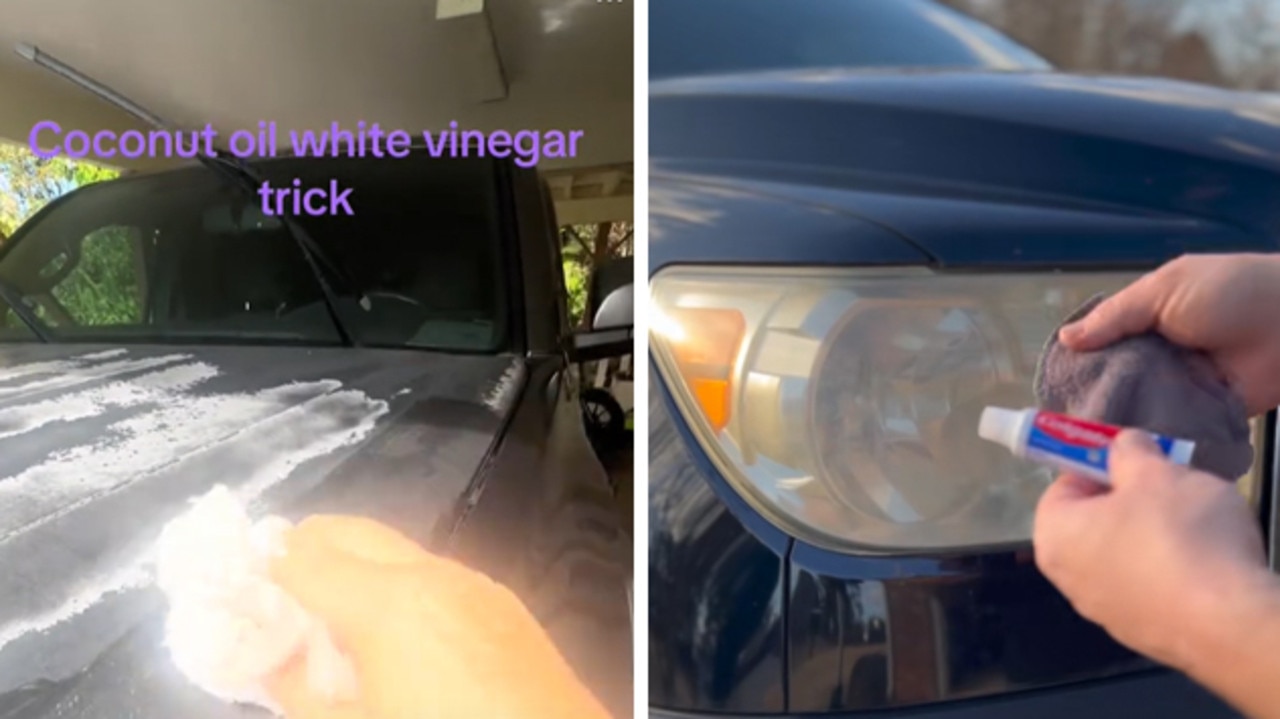The best electric cars on sale right now in Australia
Here is everything you need to know about all the best electric cars you can buy in Australia that won’t break the bank. VIEW FULL LIST.
Car Advice
Don't miss out on the headlines from Car Advice. Followed categories will be added to My News.
Australians have begun to warm to electric vehicles.
Sales this year are almost five times higher than the same period last year and EVs now account for more than 7 per cent of new-car sales.
Leading the charge is Tesla, which has the top-selling passenger car and number two SUV in the country. The brand has cemented itself as a top 10 seller, in the process overtaking big names such as Volkswagen, Subaru and Nissan.
Here are the big players in the EV market. We’ve included drive-away prices but it’s wise to double check online, as they vary from state to state because of incentives and tax breaks.
MG4
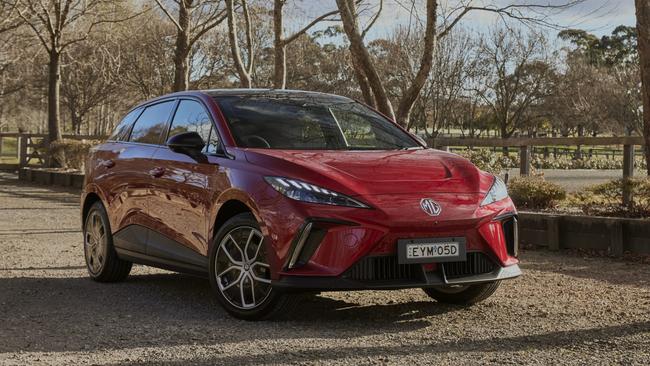
MG’s most affordable electric car has slick hatchback styling to match its sharp pricing.
Prices start at about $41,000 for the Excite 51 (numbers denote the battery capacity). It has only 350km of range and a skinny equipment list. Better equipped models – with bigger battery packs – quickly step up in price. The Long Range 77, which promises 530km between charges. costs closer to $60,000.
The rear-drive hatch focuses on driving fun, with low-down torque making for zippy progress.
Wallbox charging can be done at 6.6kW for entry versions or 11kW for the Long Range, providing a full charge in less than nine hours. A 10-80 per cent public fast charge takes between 28 and 38 minutes and you can plug appliances into the car, although the adaptor costs extra.
GWM Ora
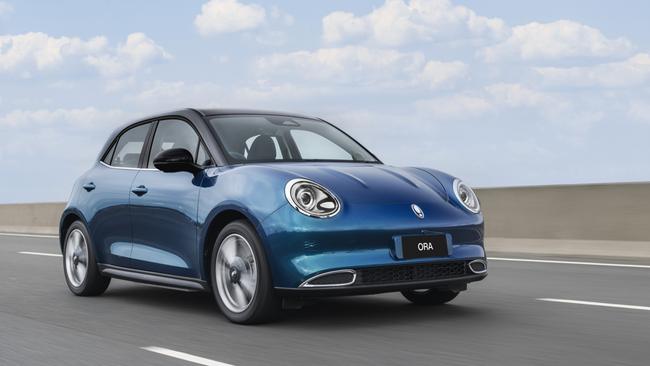
Priced from about $41,000, the GWM Ora packs plenty in for the money. It’s also deceptively spacious, although the range for the entry-level model is only 310km.
You can spend another $6000 to extend the range to 420km, or you can add more equipment in the Ultra or GT models.
AC charging can be done at 11kW for a full charge in six to seven hours. On fast chargers, it can go from 10-80 per cent charge in 40 to 50 minutes, depending on the battery size.
Power outputs are modest and the wheels can chirp when accelerating, but it’s surprisingly quick off the mark for around-town running.
BYD Dolphin

We’re yet to drive it, but the BYD Dolphin is for now the cheapest EV on the market.
Pricing kicks off at about $40,000 and includes a 12.8-inch infotainment screen, 360-degree camera, wireless phone charging and powered and heated front seats.
But that price leader has only 340km of range and makes just 70kW of power, making it one of the least powerful cars on the market. The Premium, which costs another $6000, more than doubles the power and increases the range to 427km.
It also has a vehicle-to-load (V2L) function that allows you to charge household appliances from the car’s battery.
BYD Atto 3
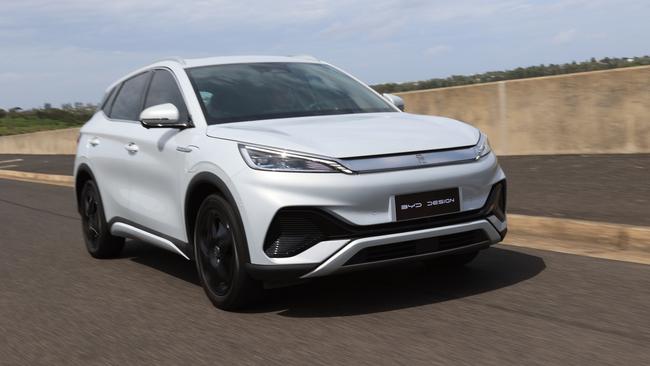
This mid-sized SUV is selling strongly. Key to its appeal is solid value, a healthy list of equipment and decent driving manners.
The basic Atto 3 (about $48,000) comes with just 345km of claimed range, while the Extended Range ($51,000) has 420km.
Charging can be done via a home wallbox in about nine hours. On a fast charger, a 10-80 per cent charge takes about 40 minutes. It also has V2L.
MG ZS EV

The ZS EV is an electric version of the brand’s popular petrol-powered SUV. The Excite, which has 320km of range, is about $47,000 drive-away. Acceleration is modest but easily accessible.
The Essence (about $51,000) adds more features, including imitation leather, wireless phone charging and a panoramic sunroof.
The Long Range costs another $8000 and has 440km of range. Charging can be done at home – and the brand is doing deals on home chargers – while fast charging takes 54-63 minutes from 10-80 per cent.
Kia Niro Electric
The Niro EV starts at $72,000, making it an expensive compact SUV, albeit one generously appointed.
A GT-Line model ($78,000) brings styling upgrades, wireless phone charging, Harman Kardon audio, heated and ventilated front seats and a head-up display.
The Niro is an honest compact SUV on the road, but lacks driving panache. It can travel 460km between charges and replenish from 10 to 80 per cent in 43 minutes. Home AC charging can be done at up to 11kW and it has V2L.
Cupra Born
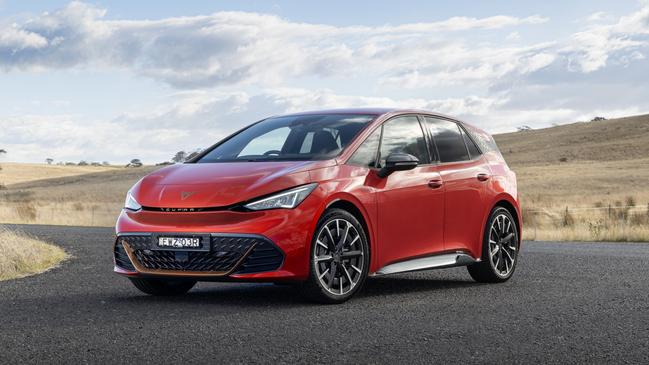
The European-built Born has distinctive styling and a long list of standard equipment. Priced from $64,990 drive-away, the Born delivers an engaging driving experience, something helped by a rear-drive layout that makes it easier to harness the motor’s 170kW and 310Nm.
A performance pack adds bigger tyres and adjustable dampers for better road holding. Its claimed range is 511km and it can top up from 10 to 80 per cent in 34 minutes.
Nissan Leaf
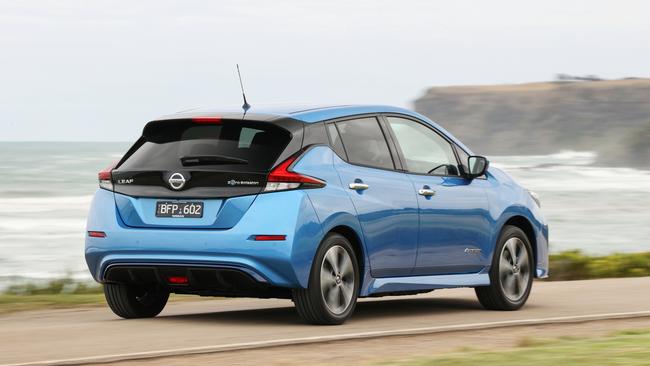
The Leaf (about $55,000) brings a big selling point that no other battery electric vehicle currently matches: it has the ability to power your house or feed electricity back into the grid.
There’s a big catch, though. The tech is expensive and South Australia is the only state to approve its use. An e+ model (about $66,000) extends the range from a measly 270km to a healthier (but still modest) 385km, increasing power in the process. The Leaf is unremarkable but honest.
Tesla Model 3
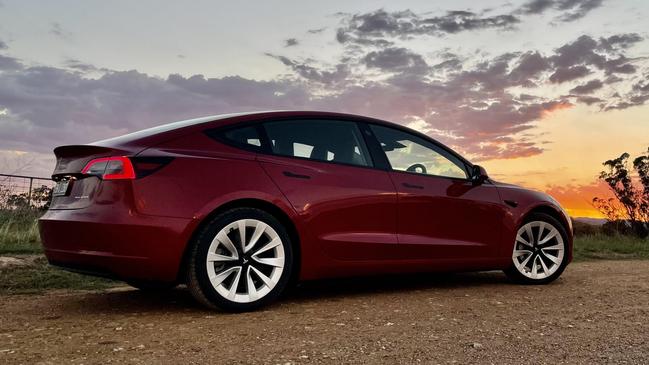
A combination of distinctive styling and industry-leading technology, the Tesla is also impressively efficient, which translates to good driving range.
In the most popular rear-drive model it has 491km of range, while the dual-motor Long Range ups that to 602km.
When it comes time to charging, Tesla’s bespoke charging network effectively doubles the number of places you can charge.
It drives well and is priced from just $62,000, adding to the appeal. A heavily updated model is expected within months.
Tesla Model Y
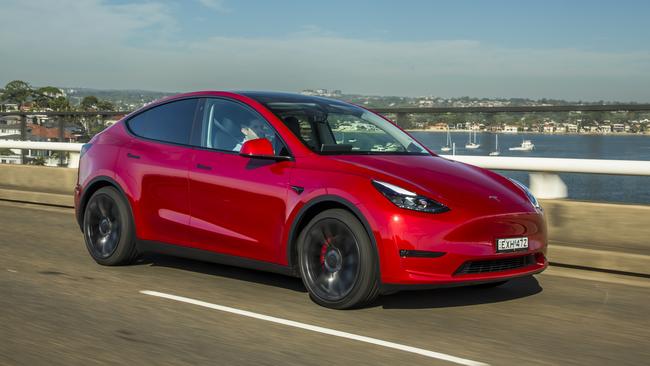
Shares its core with the Model 3 but its taller body liberates more occupant and luggage space. The basic rear-drive model (about $70,000) is now eligible for incentives in most parts of the country, adding to its appeal. Larger and heavier than the Model 3 but with the same electrical hardware, the Model Y has less range, about 455km.
The Long Range (about $84,000) has 533km of range and swifter acceleration thanks to its second motor.
Polestar 2
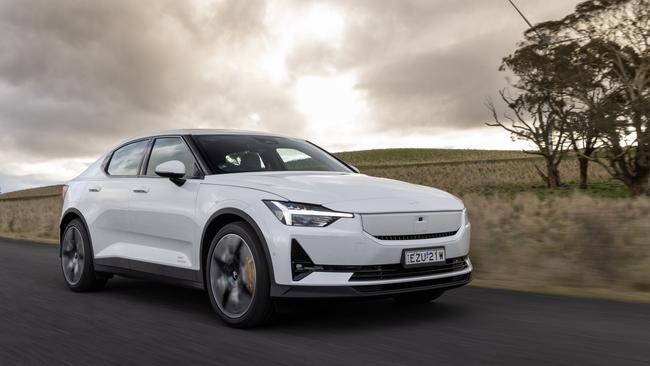
This sleek sedan, which shares its core with the Volvo XC40, has just had a major update.
Instead of driving the front wheels, it now drives the rears, which improves its road manners. Its up-market cabin is a step above the Model 3 but it’s also more expensive. Priced from about $72,000, the cheapest model has decent performance and a range of 546km.
The Long Range model costs another $4000 and delivers 655km between charges. It can charge from 10 to 80 per cent charge in about half an hour.
Kia EV6
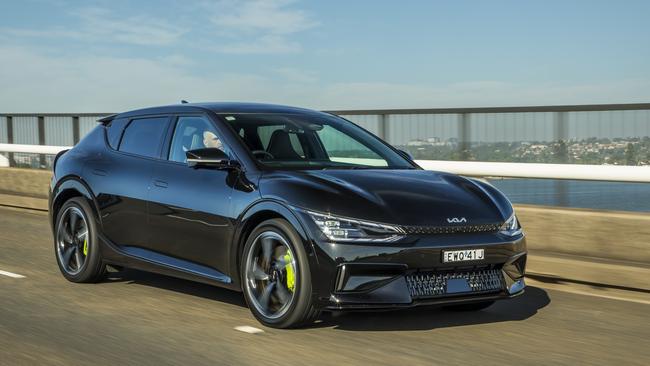
The EV6 impresses with its blend of space, EV smarts and driving maturity. Key to the SUV’s appeal is its ability to use ultra rapid chargers, which can add 300km of range in about 18 minutes. Single-motor models drive the rear wheels and display poise and athleticism.
The entry-level Air costs about $78,000 and claims 528km of range. Better equipped GT-Line models kick off at about $85,000 but get stickier rubber that reduces the range to 504km. GT-Line models also offer the option of a second motor for all-wheel drive.
Hyundai Ioniq 5
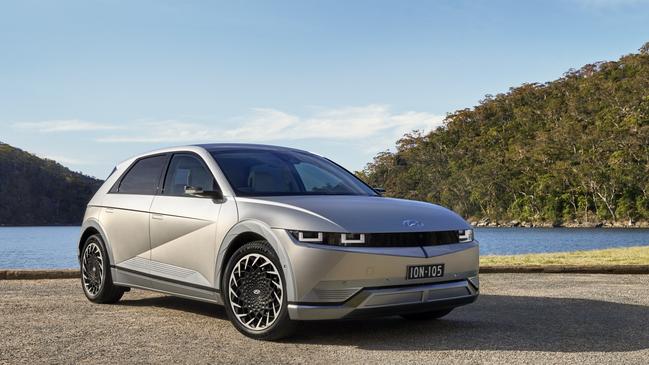
A twin-under-the-skin to the EV6, Hyundai’s retro-infused Ioniq 5 has the same rapid charging benefits, decent performance and V2L ability.
The single-motor Dynamiq is about $77,000 and combines generous features with a 507km range. Another $8000 gets you into the Techniq that adds a second motor for all-wheel-drive, better performance and more gear, but has only 454km. There’s also an Epiq ($90,000) that replaces side mirrors with cameras, among other extras.
Hyundai Ioniq 6
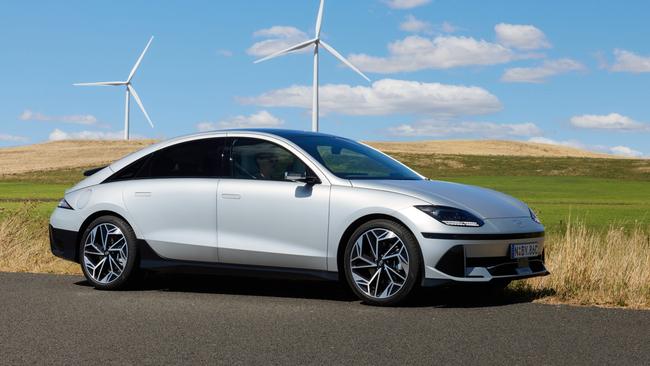
This sleek sedan shares its basics with the Ioniq 5 but slips through the air better. The most efficient EV in its class, it’s smooth and comfy, too.
The Dynamiq (about $79,000) is able to cover 614km between charges. Techniq all-wheel drive models ($89,000) reduce that to 519km but improve acceleration. The low-slung shape takes its toll on boot space and rear headroom, but up front it’s roomy.
Volvo XC40
The electric variant now accounts for half of XC40 sales. Priced from $85,000, the single motor model can travel 460km on a charge.
The Twin Motor ($94,000) stretches the range to 500km courtesy of a larger battery. It will comfortably take four people, or five at a pinch. The XC40 is also impressive on the road.
Volvo C40
Priced from $87,000, the C40 can travel 476km on a charge. A twin-motor model with a larger battery ($97,000) has 507km of range.
It’s similar to the XC40, but the lower roof means less rear headroom and a slightly smaller boot. A fast charge can top it up from 10 to 80 per cent in 27 minutes.
HOW TO SAVE ON AN EV
Electric vehicle prices are coming down, but they are still expensive compared with their petrol-powered counterparts.
There are ways to bridge the gap, though.
If you can negotiate a salary packaging arrangement with your employer, you can save thousands on an EV purchase.
Last year, the federal government waived the fringe benefits tax on vehicles bought through company leases, which tipped the scales in favour of EVs.
According to figures supplied by the National Automotive Leasing and Salary Packaging Association, the changes can make it cheaper to lease a $75,000 Tesla Model Y than a $58,000 Toyota RAV4 hybrid.
The NALSPA figures focused on a four-year salary packaging arrangement for an employee who travelled 15,000km a year and earned $100,000 per annum.
The modelling included running costs such as fuel or electricity, but didn’t factor in state government subsidies, which range from $3000 to $6000.
The estimated reduction is take-home pay per year was less than $12,000 for the Model Y and more than $14,500 for the RAV4.
If you’re not in a position to salary package a car through work, there are other ways to save money.
Many banks are offering lower interest personal loans for EVs. The Commonwealth Bank has a discounted rate of 5.49 per cent, compared with 7.99 per cent for petrol and diesel vehicles.
If you secure a seven-year personal loan with no deposit for an MG ZS EV Excite it will cost and estimated $656.52 a month, compared with $714.98 for a similar-sized – and similarly priced – Nissan Qashqai.
That comparison doesn’t take into account the potential running cost savings for the MG.
At $2.15 a litre it will cost you $140 to refill the Nissan Qashqai’s 65-litre petrol tank with the required 95 premium fuel. That will give you a claimed range of 940km. The MG ZS EV’s 51kWh battery would cost roughly $25 for 320km of range at a public charger ($75 for 960km of range), which means you’d be saving roughly $65 every 1000km you travelled in the EV.
Owners using cheaper domestic electricity you could save even more, while solar panel owners charging during the day could effectively refill for free.
Originally published as The best electric cars on sale right now in Australia


